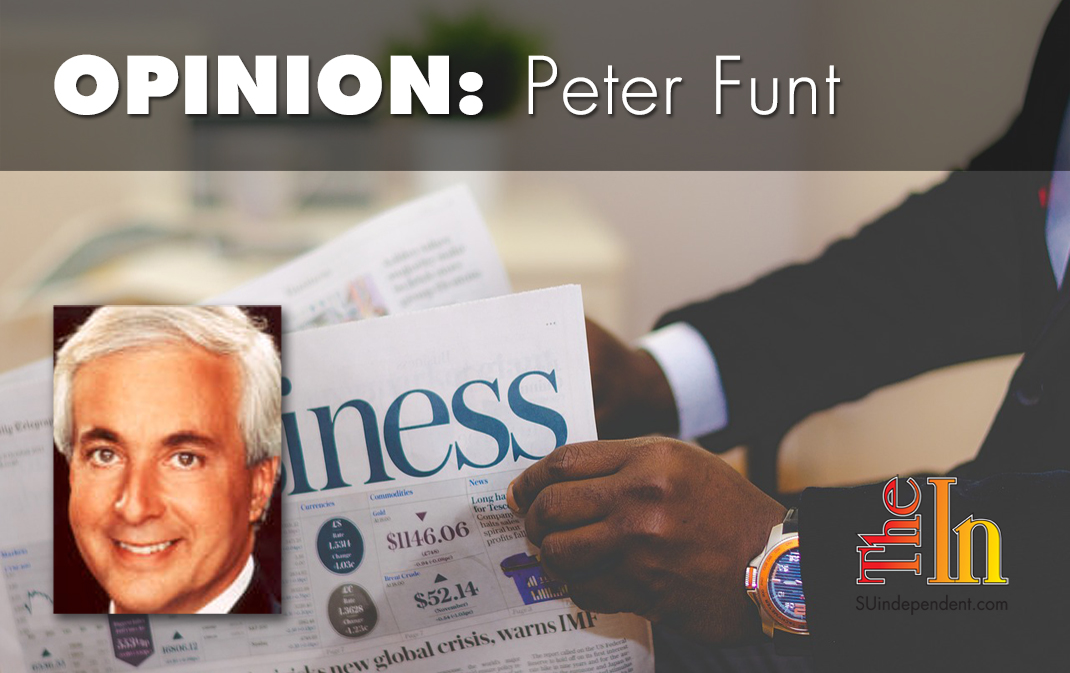
How many newsletters do you receive?
By Peter Funt
I read the news today, oh boy. And by “read,” I mean skimmed. And by “news,” I mean aggregates. And by “today,” I mean round-the-clock. And by “oh boy,” I mean I’m suffering from email newsletter overload.
Pretty much every major news outlet has joined the booming newsletter business. The Washington Post proudly declares that it now publishes 65 — yes, 65 — different newsletters. In fact, the other day I read in a newsletter published by Politico that the Post is looking for a newsletter editor “to support a wide portfolio of editorial products that have become an essential part of the Post’s success in reaching and retaining readers.”
Indeed, most publishers use newsletters as loss leaders to reach and retain, although a few of these missives thrive as profit-making, standalone publications. It’s high tide for those who enjoy having news pinged at them relentlessly in numbered and bulleted form.
The modern newsletter era got serious in 2007 when the veteran Washington newshound Mike Allen began emailing his “Politico Playbook.” Allen has a knack for ferreting out the most compelling nuggets in other people’s stories and summarizing them, Walter Winchell-style. Two years ago, he moved his newsletter to Axios while Politico continued to produce “Playbook” — which has mushroomed to 10 different regional editions.
The ability to simply click to receive scores of newsletters presents the same sort of problem for me as doughnuts do at an all-you-can-eat breakfast buffet. I start most days with “Morning Briefing” from The New York Times and “The 10-Point” newsletter from the Wall Street Journal. I read Mike Allen plus several editions of “Playbook” along with its sister, “Morning Media,” and its politically-focused cousin, “Morning Score.”
I read the Post’s “Morning 202,” which might be the most wordy newsletter on the market. Then I skim newsletters from a dozen local and regional newspapers before turning my attention to “NFL Daily,” “IP Law360,” and a passel of other soft-news newsletters. This continues through afternoon and evening updates until the day winds down with The Times’ “Evening Briefing” at dinner and CNN’s “Reliable Sources” at bedtime.
I’m embarrassed to say this is by no means my complete list. So what’s happening here to news organizations and consumers?
For most publishers, the newsletter gambit is yet another attempt to recover from the ghastly miscalculation decades ago to ignore the Internet’s profit potential. Publishers belatedly erected pay walls, but many readers had already slipped away.
Done right, newsletters are useful marketing tools to entice readers to click their way back to a paying mode. Done wrong, they are just another example of squandering valuable content on an audience of freeloaders.
As I write this, the Boston Globe has announced its “Metro Headlines” newsletter, declaring, “It’s free, just like our other two dozen newsletters.” The New York Times then unveiled its 56th newsletter: “Five Weeknight Dishes,” described as “weeknight recipes for busy people who still want something good to eat.”
Makes sense to me. I’m a busy person because I can’t stop clicking. I could use a daily newsletter aggregating the very best of the day’s newsletters.
The viewpoints expressed above are those of the author and do not necessarily reflect those of The Independent.
How to submit an article, guest opinion piece, or letter to the editor to The Independent
Do you have something to say? Want your voice to be heard by thousands of readers? Send The Independent your letter to the editor or guest opinion piece. All submissions will be considered for publication by our editorial staff. If your letter or editorial is accepted, it will run on suindependent.com, and we’ll promote it through all of our social media channels. We may even decide to include it in our monthly print edition. Just follow our simple submission guidelines and make your voice heard:
—Submissions should be between 300 and 1,500 words.
—Submissions must be sent to editor@infowest.com as a .doc, .docx, .txt, or .rtf file.
—The subject line of the email containing your submission should read “Letter to the editor.”
—Attach your name to both the email and the document file (we don’t run anonymous letters).
—If you have a photo or image you’d like us to use and it’s in .jpg format, at least 1200 X 754 pixels large, and your intellectual property (you own the copyright), feel free to attach it as well, though we reserve the right to choose a different image.
—If you are on Twitter and would like a shout-out when your piece or letter is published, include that in your correspondence and we’ll give you a mention at the time of publication.
Articles related to “How many newsletters do you receive?”
Mainstream media vs. alternative media in the Clinton/Trump election




Please add my email for your newsletters, and news..
P Baldwin
Pbaldwon@yahoo.ca